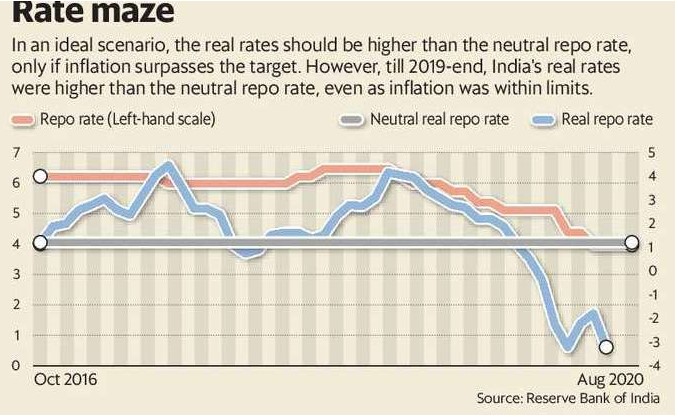Focus: GS-III Indian Economy
What is the new monetary framework?
- The new monetary framework was an outcome of the agreement between the Reserve Bank of India (RBI) and the central government signed in 2015.
- The agreement explicitly made inflation targeting the objective of the MPC while using the repo rate as the instrument for it.
- The Reserve Bank’s MPC was given the target of keeping inflation at 4% with a tolerance limit of 2%.
- This meant that inflation should be between 2% and 6%.
- The target was in contrast with the multiple indicator approach that predated this framework where the central bank focused on both growth and price stability.
How does the MPC target inflation?
- Every two months, the Reserve Bank’s MPC has a review meeting where they discuss the likely inflation and growth estimates over the coming months.
- Based on this review, the MPC targets inflation using the policy rate, or the repo rate. When inflation is higher than the inflation target set by the central bank, then the MPC must increase the repo rate. On the other hand, when the actual inflation is lower than the target, the MPC could decrease the repo rate. The
- MPC looks at consumer price inflation (CPI) as the inflation target that it must keep between 2% and 6%.
How is the neutral real rate defined?
- The Real Rate = Repo rate minus inflation.
- A neutral real rate is the rate of interest at which the monetary policy is neither accommodative nor too tight.
- The neutral real rate concept is important and significant for inflation targeting.
- If inflation is higher than the target, we should have a higher real rate than the neutral real rate and vice versa.

Has inflation targeting failed in India?
- There has been a shift in the approach towards the conduct of monetary policy as many nations gradually shift from inflation targeting.
- Indeed, inflation in India has been subdued since the new monetary policy framework was brought in.
- Many view this as a sign of its success in India while others point at the tight policy and its adverse impact on India’s growth rate as a sign of problems with the framework, which has come at the cost of growth.
-Source: Livemint




